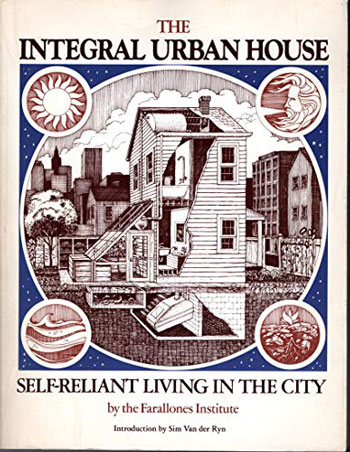
By Tom & Carol Braford
Have you ever sat quietly just waiting for inspiration and thinking, I’m just wasting my time? This may have worked before and then it hit me but not like a ton of bricks. No! It was more like a feather tickling me under my nose and behind my ears. It was especially that way when the last word flowed out on this page replacing the word survival that had momentarily filled the space until the feather brushed it away and the quill on the other end of this imaginary instrument filled the empty space with ‘Thrivalists.’
Survival, of course, is an important aspect of community that trickles down to the individual or more accurately that community builds up, while being a nature lover for a species whose well-being is closely linked to the actual world. But thrivalism requires that we collaborate and expand, rather than extinguish this rootedness. One way to do this is to make it not just a personal but a community practice.
That is why my first call is to Communitarians, because this group already knows that communities do not just happen. They are built over time, supported by practices that are good enough for now and safe enough to try, because a true democratic community is flexible and always looking collectively, not just for what works for the few, but for the entire internal community and the adjacent neighborhood as well.
My next call is for Nature Lovers, because if we continue to just exploit and degrade the natural world, human beings will not be that far behind. Conversely, if the natural world is allowed and encouraged to become resilient again and thrive over a longer and longer period of time, we will be able to do the same.
Ideally, those that respond to my call will be at least somewhat attracted by all three, because even though most people try to be thrivalists on their own, that cannot really work for more than a misfortunate few over a shorter and shorter period of time.
I originally wrote “fortunate” few but then reconsidered that use of the word because having a personal fortune is not just the American dream but the dream of modernity. A dream of surrounding ourselves with more and more access to ever-expanding sources of material wealth in a finite world. This, of course, cannot and is not working.
This is a call to wake up to reality gradually while we still have that degree of luxury and while true flourishing is still within reach and within the reach of nature, provided we are intentional about it and therefore are able to include more and more individuals and families through the transformational power of Islands of Coherence Communities of Practice, because it is always a shock when we are startled into wakefulness.
This is not a clarion call to doomscrollers, but it does require a certain degree of wakefulness, which is not something that everyone is up to initially. In fact, it is the opposite of doomscrolling or even GDP hype scrolling.
It is an invitation to take a deep dive into human nature and, perhaps even more challenging, into your own nature to inquire into the question, “do I have the right stuff to go where millions of people have gone through the ages before modernity, but which now needs to be rediscovered at scale in a currently unfathomable way?”
What we are looking for is Intrepid Pioneers of the Environmental, Social and Economic Frontier. The term Intrepid Pioneer of the Eco-frontier was first, as far as I know, used by the New York Times to describe Sim Van der Ryn.
I first learned of Sim’s work in the early 70’s in an elegantly illustrated book that he authored in collaboration with other members of the Farallones Institute called, The Integral Urban House.
It was about an actual place that I visited in Berkeley, CA, which was rehabbed as a practical application of integral design, which is Sim’s idea that every design element should accomplish several goals. My favorite example of this in the book was that during their research, one of Sim’s students discovered that in every hive, around 100 honeybees die every day and they typically expire close to home while leaving or approaching the hive.
So the students constructing this demonstration project mounted the hive just beyond the water’s edge above the fish pond so, when their time came, the bees would provide a meal to attentive fish and other aquatic life. In a way, this satisfied all three of Sim’s primary design principles: iterative design, the idea that each design element was thoroughly suited to its primary purpose, integral design, that as much as possible each element should address a number of purposes, and empathic design, the idea that designs should consider the needs of human beings, all other life forms and the needs of future generations.
Sim passed away last year at 89 after an illustrious career as the youngest and most beloved professor of architecture at UC Berkeley, California, State Architect during the first Jerry Brown administration, primary author of both the California and the Netherlands plans to fulfill on the Paris Climate Accord and Architect of record in collaboration with his Ecological Design Collaborative that included many one of a kind wonders.
It was our privilege to be one of the last groups to host him during a week-long visit to St. Louis where he and his partner Eden graciously shared their combined wisdom with students of architecture at Washington University, attendees at the Healthy Planet Expo and a OneSTL event, as well as the leadership of the USGBC Gateway Chapter at an event hosted by Christner Architects at their offices. Sim said this was one of the nicest architectural offices he had ever visited, because it has the community of designers working in close proximity with their peers in the center, surrounded by nature on all sides at the periphery.
I had visited Sim twice at his Eco Retreat in Inverness CA before he returned the visit. He said at the time that he had some of the best clients that an architect could ever wish for, but he had never found one that was willing to go as far as he was. He said, “I share most of your goals, ambitions and aspirations for Islands of Coherence Communities of Practice, and this may be the project I have always dreamed of, a truly communitarian project that is focused on the needs of the future that we are headed for, whether we are ready or not.” He said he was wrapping up his last personal project and his Ecological Design Collaborative. Then he said, “But you are welcome to reconstitute it here in St. Louis, if you like.”
He then shared with me that even before he was appointed as California state architect, Jerry Brown’s father had asked him to visit the largest ranches throughout the state and come up with a plan to better provide for the state’s legions of migrant workers. He said the community-based housing with shared community facilities, like what we are proposing, reminded him of what he ended up proposing and what was eventually accepted and built out after initial strong resistance that was so bad initially that he had to be escorted to his first visits to the ranches with a state police car both in front and behind his car.
Please contact us to explore how you can participate at: braford@sbcglobal.net or at www.ArizmendiEcovillage.com.


